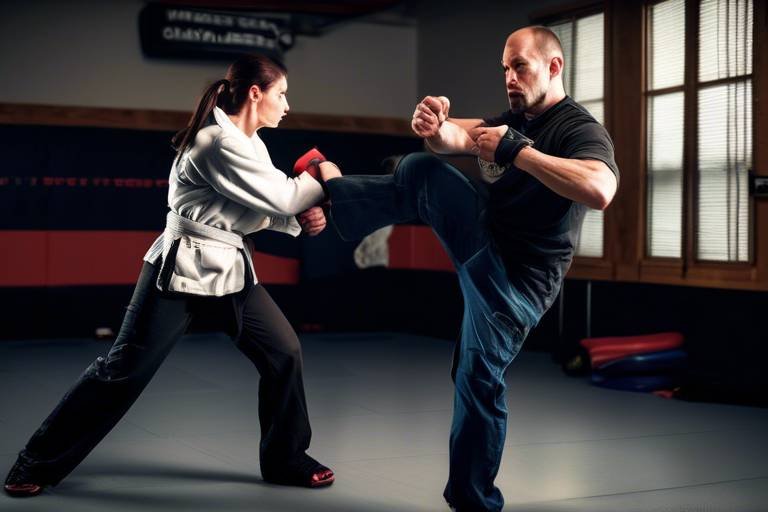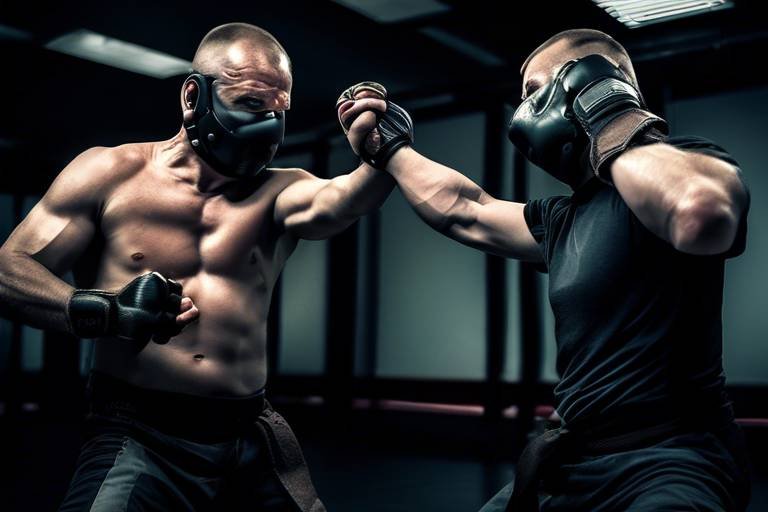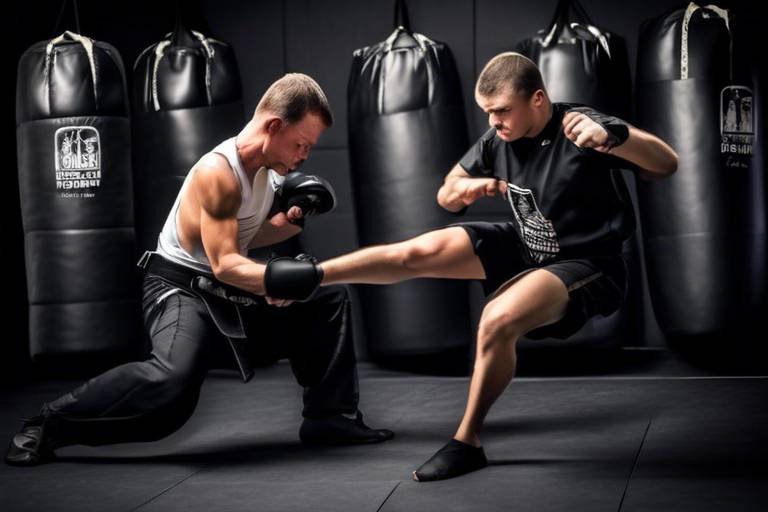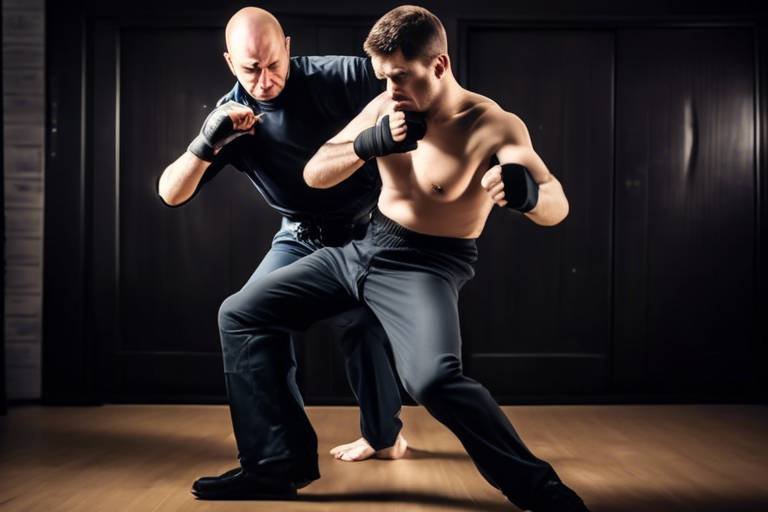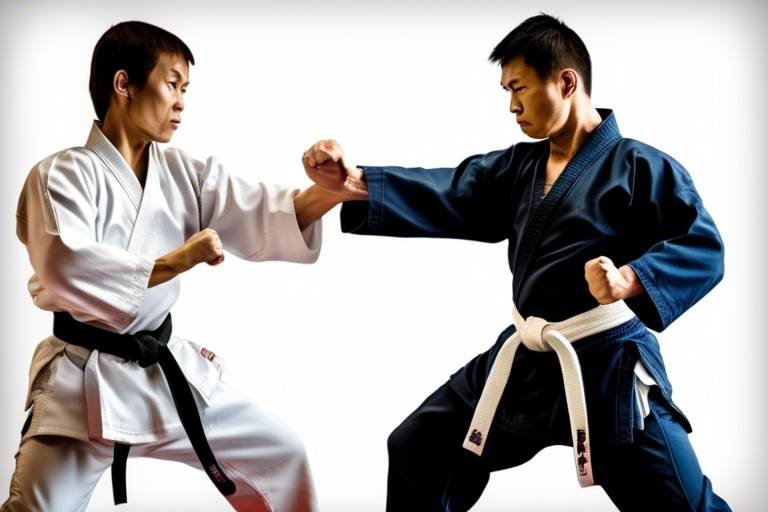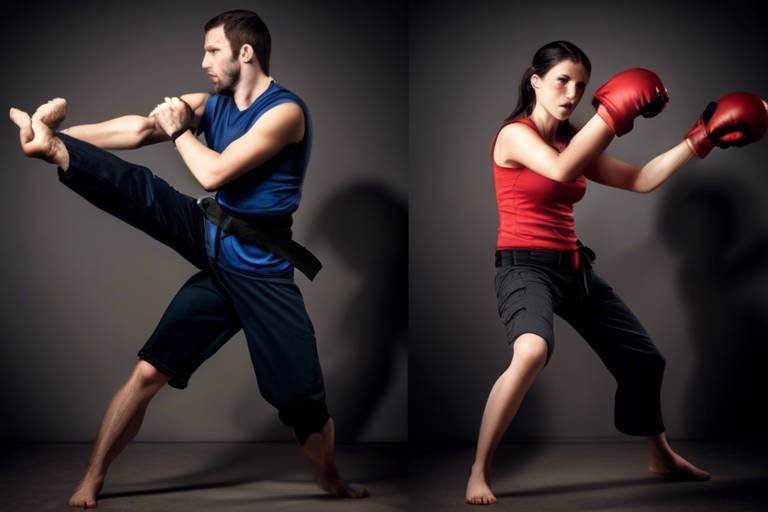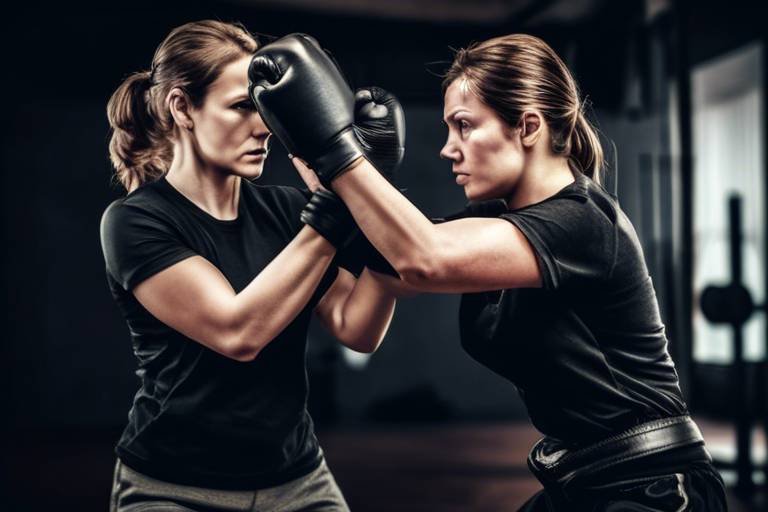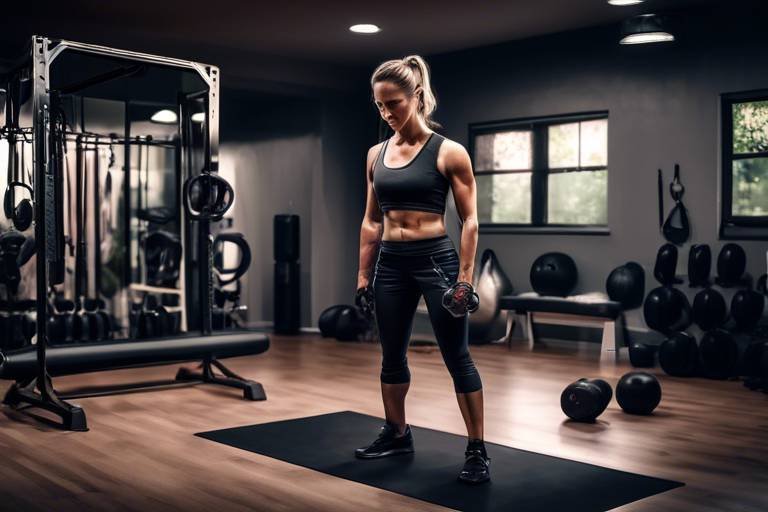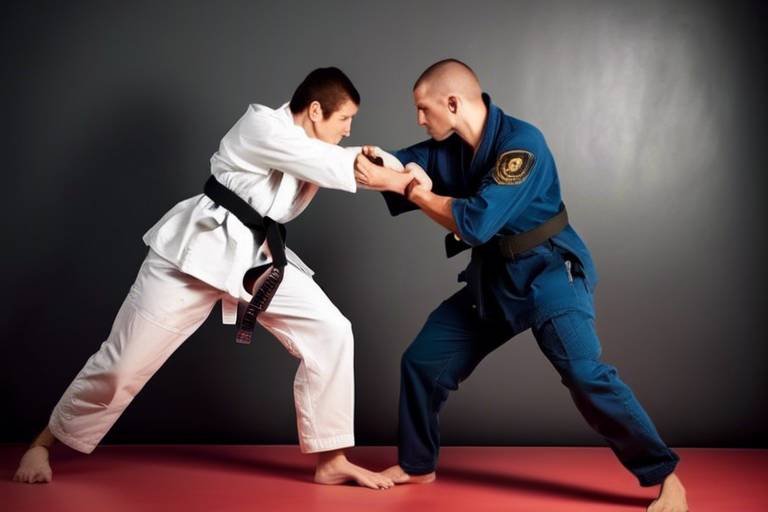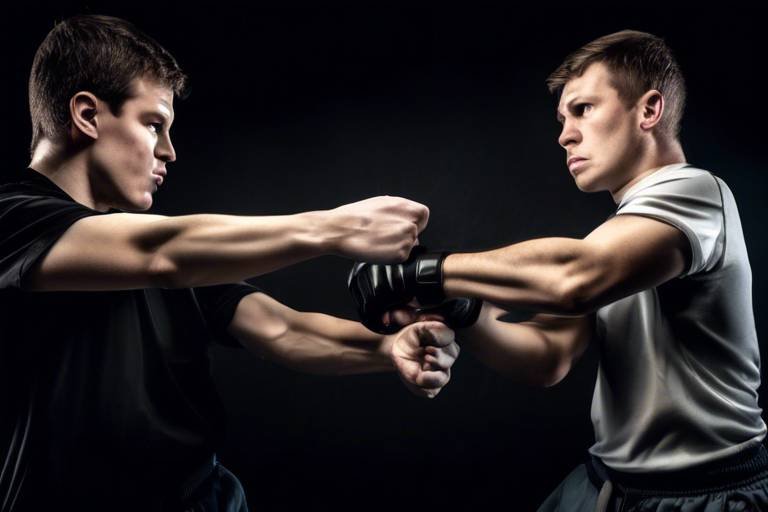The Importance of Flexibility in Self-Defense Training
When it comes to self-defense, many people think of strength, speed, or even technique. However, one of the most crucial elements often overlooked is flexibility. It's like the unsung hero of self-defense training, quietly working behind the scenes to enhance performance and minimize injury risk. Imagine trying to escape a tight situation; if your body is stiff, you might find yourself stuck, unable to react swiftly. But if you're flexible, you're more like a rubber band, able to twist, turn, and evade with ease. This article will delve into the various dimensions of flexibility and its critical role in effective self-defense training, ensuring you understand why it should be a priority in your regimen.
Flexibility refers to the range of motion in your joints and muscles. Think of it as the ability of your body to stretch and bend without resistance. In the realm of physical training and self-defense scenarios, flexibility is not just a nice-to-have; it’s essential. It allows for greater movement efficiency, enabling you to perform techniques with precision and power. Without adequate flexibility, your body becomes like a rusty hinge—stiff and unresponsive. In self-defense, where split-second decisions can mean the difference between safety and harm, having a flexible body can significantly enhance your effectiveness.
Incorporating flexibility into your self-defense training offers numerous advantages that can transform your performance. Here are some of the key benefits:
- Improved Mobility: Enhanced flexibility leads to better mobility, allowing practitioners to evade attacks and execute techniques more effectively.
- Enhanced Technique Execution: With greater flexibility, you can perform techniques with better form, which can amplify their effectiveness.
- Reduced Injury Risk: Flexibility training significantly decreases the likelihood of injuries during practice, keeping you safe and able to train consistently.
Improved flexibility directly correlates with enhanced mobility. Picture yourself in a self-defense situation: the ability to swiftly dodge an incoming strike or to pivot gracefully can be the difference between success and failure. Mobility allows you to move fluidly, making it easier to evade attacks and counter effectively. When you’re flexible, your body can adapt to various situations, making it more difficult for an attacker to predict your movements. This adaptability is crucial in self-defense, where the element of surprise can turn the tide in your favor.
One effective way to enhance mobility before training sessions is through dynamic stretching. These stretches involve movement and are designed to increase blood flow and prepare your muscles for action. Some effective dynamic stretches you can incorporate into your warm-up routine include:
- Leg Swings
- Arm Circles
- Lunges with a Twist
By incorporating these stretches, you’ll not only improve your flexibility but also your overall performance during self-defense training.
After an intense training session, static stretching becomes vital for recovery. This type of stretching involves holding a position for a prolonged period, which helps to maintain flexibility and prevent injuries. Think of static stretching as a way to “cool down” your muscles after they’ve been put through the wringer. By dedicating time to static stretches post-training, you can help your muscles recover and stay limber, ensuring you’re ready for your next session.
One of the most compelling reasons to prioritize flexibility training is its role in injury prevention. When your muscles and joints are flexible, they can absorb shock and adapt to sudden movements more effectively. This adaptability is crucial in self-defense practice, where unexpected situations can arise. By maintaining flexibility, you can significantly reduce the risk of strains, sprains, and other injuries that could sideline you from training. In essence, flexibility acts as a protective barrier, allowing you to train harder and smarter.
There are various effective techniques to enhance flexibility, including practices like yoga, Pilates, and specific stretching routines. Each of these methods offers unique benefits that can complement your self-defense training. For instance, yoga focuses on breathing and balance, while Pilates emphasizes core strength alongside flexibility. By incorporating these practices into your routine, you can develop a well-rounded approach to flexibility training.
Yoga is an excellent way to improve overall flexibility. Specific poses, such as the Downward Dog or Pigeon Pose, can greatly benefit self-defense practitioners by enhancing their range of motion. Regular practice of these poses not only increases flexibility but also promotes mental focus, which is equally important in self-defense scenarios.
Pilates is another fantastic option that focuses on building core strength while improving flexibility. Exercises like the Roll-Up and Spine Stretch not only help in enhancing your range of motion but also promote better balance—a key component in executing self-defense techniques effectively.
Q: How often should I incorporate flexibility training into my self-defense routine?
A: Ideally, you should aim to include flexibility training at least 2-3 times a week, both in warm-up and cool-down sessions.
Q: Can I improve my flexibility at home?
A: Absolutely! There are countless online resources, videos, and apps that can guide you through effective stretching routines you can do right at home.
Q: Is it possible to be too flexible?
A: While flexibility is beneficial, excessive flexibility without strength can lead to instability. It's essential to balance flexibility training with strength-building exercises.

Understanding Flexibility
Flexibility is often misunderstood; it's not just about bending and stretching. In the simplest terms, flexibility refers to the range of motion available at a joint or group of joints. Imagine a rubber band; when it's stretched, it can extend far beyond its original shape. Similarly, our muscles and joints need that same capacity to move freely and efficiently. In the realm of self-defense, this becomes crucial. Why? Because the ability to maneuver quickly and fluidly can mean the difference between evading an attack and being caught off guard.
When we talk about flexibility in self-defense training, we’re diving into a multifaceted concept that encompasses not just physical attributes but also mental preparedness. Being flexible physically allows practitioners to execute techniques with precision, while mental flexibility ensures adaptability in unpredictable situations. Think of it as being like a tree in the wind; those that can bend without breaking are more likely to survive the storm.
The significance of flexibility extends beyond just the physical realm. It plays a vital role in enhancing performance during self-defense scenarios. Consider the following dimensions of flexibility:
- Joint Flexibility: The ability of joints to move through their full range of motion, which is essential for executing techniques effectively.
- Muscle Flexibility: Refers to the elasticity of muscles, allowing for better extension and contraction during movements.
- Functional Flexibility: The capability to perform movements required in self-defense situations, integrating both strength and flexibility.
Incorporating flexibility training into your regimen not only improves your self-defense techniques but also enhances overall physical fitness. As you become more flexible, you’ll notice that simple movements feel easier, and you can perform more complex techniques with greater ease. This is particularly important in self-defense, where the ability to react swiftly can be crucial. So, whether you're a seasoned martial artist or just starting out, understanding and improving your flexibility is a fundamental step towards becoming a more effective defender.

Benefits of Flexibility in Self-Defense
When it comes to self-defense, flexibility is not just a nice-to-have; it's a game changer. Imagine being able to twist, turn, and evade an attack with the grace of a dancer or the agility of a cat. That's what flexibility brings to the table. It allows practitioners to move fluidly, making it easier to execute techniques and respond to various self-defense scenarios. But the benefits don't stop there. Let's dive deeper into how flexibility enhances self-defense training.
One of the most significant advantages of flexibility is improved mobility. When your muscles and joints are flexible, you can move more freely and efficiently. This improved mobility enables you to evade attacks and position yourself better during confrontations. For instance, if someone attempts to grab you, a flexible body allows you to twist away or drop low, making it harder for them to catch you. Think of flexibility as your secret weapon; it helps you stay one step ahead of your opponent.
Moreover, flexibility enhances the execution of self-defense techniques. Whether you're performing a kick, a punch, or a defensive maneuver, having a greater range of motion means you can execute these moves with precision and power. Imagine trying to throw a punch with stiff shoulders; it just won't have the same impact as a punch thrown from a fully flexible position. This is where flexibility becomes crucial—it's about maximizing your potential and ensuring that every movement counts.
Another vital benefit of flexibility is injury prevention. Engaging in self-defense training without adequate flexibility can lead to strains, sprains, and other injuries. When your muscles and joints are flexible, they can absorb shocks better and withstand the stresses of intense physical activity. For example, if you're practicing a high kick, a flexible hip joint can help you avoid injury by allowing for a more natural movement pattern. In essence, flexibility acts as a protective barrier, keeping you safe while you train hard.
Incorporating flexibility into your self-defense training can be as simple as adding a few stretches to your warm-up or cooldown routine. Here are some key benefits summarized in a table:
| Benefit | Description |
|---|---|
| Improved Mobility | Allows for better evasion and positioning during confrontations. |
| Enhanced Technique Execution | Facilitates precise and powerful movements. |
| Injury Prevention | Reduces the risk of strains and sprains during training. |
In conclusion, flexibility is an essential component of effective self-defense training. It not only enhances your ability to move and execute techniques but also plays a crucial role in keeping you safe from injuries. So, whether you're a seasoned practitioner or just starting out, remember that investing time in flexibility training will pay off in spades when it comes to self-defense.

Enhanced Mobility
When it comes to self-defense, mobility is not just a buzzword; it’s a lifeline. Imagine being in a situation where you need to dodge an attack or quickly reposition yourself to counter. If your body isn’t flexible, you might find yourself in a tight spot—literally! Enhanced mobility allows self-defense practitioners to move fluidly and respond to threats with agility. The ability to bend, twist, and stretch can mean the difference between escaping unscathed or getting caught off guard.
Think about it: when you're flexible, you can execute techniques that require a wide range of motion. For instance, a high kick or a swift lateral movement becomes much easier when your muscles and joints are accustomed to stretching. This means you can evade attacks more effectively and position yourself for a counterattack with greater ease. In essence, flexibility transforms your body into a well-oiled machine, enabling you to react instinctively and efficiently.
To give you a clearer picture, let’s break down how enhanced mobility contributes to self-defense:
- Quick Evasion: A flexible body can duck, dodge, and weave out of harm's way much faster.
- Improved Technique Execution: Techniques that require bending or reaching become more accessible, allowing for smoother transitions between moves.
- Increased Confidence: Knowing that your body can handle sudden movements boosts your self-assurance in high-pressure situations.
Incorporating mobility training into your self-defense routine can be as simple as adding a few dynamic stretches before you start. These stretches not only warm up your muscles but also prepare your body for the kind of fluid movements you'll need to perform. Consider exercises like leg swings, arm circles, and torso twists. These movements mimic the kinds of actions you might take in a self-defense scenario, allowing your body to adapt and respond more effectively.
Moreover, enhanced mobility isn't just about being able to move; it's about protecting yourself. A flexible body can absorb impacts better, reducing the likelihood of injury during training or an actual confrontation. When your joints and muscles are accustomed to a full range of motion, they can handle unexpected twists and turns without strain. So, the next time you step onto the mat, remember that enhancing your mobility is not just an option; it’s a necessity for effective self-defense.

Dynamic Stretching Techniques
Dynamic stretching is a powerful tool in the arsenal of self-defense training, and it serves as an essential warm-up method that prepares the body for the physical demands of training. Unlike static stretching, which involves holding a stretch for an extended period, dynamic stretching involves controlled movements that improve flexibility and increase blood flow to the muscles. This not only enhances your range of motion but also gets your heart rate up, making it an ideal precursor to any rigorous self-defense session.
Imagine you’re a coiled spring—ready to unleash energy at a moment’s notice. That’s the essence of dynamic stretching. It equips self-defense practitioners with the ability to move fluidly and react quickly in high-pressure situations. By incorporating dynamic stretches into your warm-up routine, you’re not just preparing your body; you’re also training your mind to anticipate and react to potential threats. Here are a few effective dynamic stretching techniques that can be easily integrated into your training regimen:
- Leg Swings: Stand next to a wall or support and swing one leg forward and backward in a controlled manner. This enhances hip flexibility and prepares your legs for quick movements.
- Arm Circles: Extend your arms out to your sides and make small circles, gradually increasing their size. This helps to loosen up the shoulders, which is crucial for executing various self-defense techniques.
- Lunges with a Twist: Perform a forward lunge and twist your torso towards the leg that is in front of you. This not only stretches your hip flexors but also engages your core, which is vital for balance and stability.
Incorporating these dynamic stretches into your warm-up routine can significantly enhance your performance during self-defense training. Not only do they improve flexibility, but they also prepare your muscles for the explosive movements often required in self-defense situations. Think of it as tuning a musical instrument; the better tuned you are, the more harmonious your movements will be. So, before you step onto the mat or into the dojo, take a few minutes to engage in these dynamic stretches. Your body will thank you, and you’ll be better prepared to face any challenge that comes your way.

Static Stretching for Recovery
After an intense self-defense training session, your body deserves a little TLC, and that's where static stretching comes into play. This type of stretching involves holding a position for a certain period, usually between 15 to 60 seconds, allowing your muscles to relax and lengthen. Think of it as a soothing balm for tired muscles—it's not just about feeling good; it's about recovery and preparing your body for the next challenge.
Static stretching is particularly important because it helps to gradually decrease muscle tension and improve overall flexibility. Imagine your muscles as elastic bands; if you pull them too hard too quickly, they might snap. By incorporating static stretching into your recovery routine, you allow your muscles to return to their natural state, reducing the risk of injury. It's like letting those elastic bands relax after a tough workout, ensuring they’re ready for action when you need them again.
Moreover, static stretching aids in the recovery process by promoting blood flow to the muscles. Increased circulation means more oxygen and nutrients are delivered to the tissues, which can help speed up recovery time. Picture your muscles as a sponge; when they’re squeezed during intense workouts, they need time to absorb the nutrients and hydration that will help them recover. Static stretching provides that necessary time, allowing your muscles to soak up what they need.
Here are some key benefits of incorporating static stretching into your post-training routine:
- Enhanced Flexibility: Regular static stretching can improve your overall range of motion, making you more agile in self-defense situations.
- Reduced Muscle Soreness: Stretching helps alleviate muscle stiffness and soreness, allowing you to train more consistently.
- Improved Posture: Stretching can help correct muscle imbalances, leading to better posture, which is crucial for effective self-defense techniques.
To make the most of static stretching, consider incorporating a few specific stretches into your recovery routine. Here’s a simple table of effective static stretches you can try:
| Stretch | Description | Duration |
|---|---|---|
| Hamstring Stretch | Sit on the ground and reach for your toes, keeping your legs straight. | 30 seconds |
| Quadriceps Stretch | Stand on one leg and pull your opposite foot towards your glutes. | 30 seconds |
| Shoulder Stretch | Bring one arm across your body and hold it with the opposite arm. | 30 seconds |
| Triceps Stretch | Raise one arm overhead, bend at the elbow, and use the opposite hand to gently push down on the bent elbow. | 30 seconds |
Incorporating these stretches into your recovery routine can significantly enhance your flexibility and overall performance in self-defense training. Remember, just like any skill, recovery takes practice and consistency. So, after your next training session, take the time to stretch it out; your body will thank you for it!
Q: How often should I perform static stretching?
A: It's best to incorporate static stretching into your routine after every training session to maximize recovery and flexibility.
Q: Can static stretching prevent injuries?
A: While it can't guarantee injury prevention, static stretching can significantly reduce the risk by improving flexibility and muscle recovery.
Q: How long should I hold each stretch?
A: Aim to hold each stretch for 15 to 60 seconds, depending on your comfort level and the specific muscle group.
Q: Is static stretching better than dynamic stretching?
A: Both types of stretching serve different purposes; dynamic stretching is great for warm-ups, while static stretching is ideal for recovery.

Injury Prevention
When it comes to self-defense training, injury prevention is not just a nice-to-have; it's a must-have. Imagine you’re in the middle of a training session, feeling strong and confident, only for a sudden twist or awkward landing to put you out of commission. Ouch! That’s where flexibility comes into play. By maintaining a good range of motion in your muscles and joints, you're not only enhancing your performance but also significantly reducing the risk of injuries.
Flexibility acts like a protective shield for your body. It allows your muscles to stretch and contract more effectively, which is crucial during high-intensity movements typical in self-defense scenarios. When your body can move freely, you’re less likely to experience strains or sprains. Think of flexibility as the oil in a well-functioning machine; without it, things can get rusty and break down. This is especially true in self-defense, where quick, explosive movements are the norm.
To further illustrate this point, let’s look at some common injuries that can occur during self-defense training and how flexibility can help prevent them:
| Common Injury | How Flexibility Helps |
|---|---|
| Muscle Strains | Increased flexibility allows muscles to stretch beyond their normal range without tearing. |
| Joint Injuries | Flexible joints can absorb shock better, reducing the risk of dislocations or sprains. |
| Lower Back Pain | Flexibility in the hips and lower back can alleviate pressure and prevent discomfort. |
Incorporating flexibility training into your routine doesn’t have to be complicated. Simple stretching exercises, dynamic warm-ups, and post-training cooldowns can work wonders. Additionally, engaging in activities such as yoga or Pilates can dramatically improve your overall flexibility, making your body more resilient against potential injuries.
So, the next time you hit the mat or the dojo, remember that flexibility is not just about being able to do the splits or touch your toes. It’s about keeping yourself safe and ready for anything that comes your way. The more flexible you are, the more prepared you'll be to handle unexpected situations without the fear of injury looming over you.
- What are some quick stretches I can do before training? Dynamic stretches like leg swings, arm circles, and torso twists are excellent warm-ups.
- How often should I incorporate flexibility training? Aim for at least 2-3 times a week, but daily stretching can yield even better results.
- Can I still train if I'm not very flexible? Absolutely! Start with simple stretches and gradually work your way up to more advanced techniques.

Flexibility Training Techniques
When it comes to enhancing flexibility, there are numerous training techniques that practitioners can incorporate into their routines. Each method offers unique benefits that cater to different aspects of flexibility, ensuring that anyone can find an approach that suits their needs. Whether you're a seasoned martial artist or just starting your self-defense journey, integrating flexibility training can significantly improve your performance and safety.
One of the most popular methods for improving flexibility is yoga. This ancient practice not only emphasizes stretching but also promotes mindfulness and body awareness. Yoga poses such as the Downward Dog, Warrior II, and Seated Forward Bend are excellent for increasing flexibility in the hips, hamstrings, and shoulders, which are crucial for executing various self-defense techniques. For instance, the Downward Dog stretches the entire back and legs, helping practitioners maintain a strong stance while being agile enough to evade attacks.
Another effective method is Pilates. This system focuses on core strength, which is vital for stability and balance in self-defense. Many Pilates exercises promote flexibility, particularly in the spine and hips. Moves like the Roll Up and Leg Circles not only enhance flexibility but also improve overall body control, allowing practitioners to move fluidly during a confrontation. By integrating Pilates into your training, you can develop a strong foundation that supports your flexibility goals.
In addition to yoga and Pilates, there are specific stretching routines that can be tailored for self-defense training. Dynamic stretching is particularly beneficial as a warm-up before training sessions. Movements like leg swings, arm circles, and walking lunges can help increase blood flow to the muscles and prepare the body for action. These dynamic stretches mimic the movements you'll perform during self-defense, making them highly relevant and effective.
On the other hand, static stretching plays a crucial role in recovery after intense workouts. Holding stretches for 15-30 seconds post-training can help maintain and improve flexibility over time. Some effective static stretches include the Butterfly Stretch for the inner thighs and the Quadriceps Stretch for the front of the thighs. These stretches not only aid in recovery but also help prevent stiffness, ensuring that your body remains limber and ready for the next training session.
To summarize, flexibility training techniques are essential for anyone involved in self-defense. By incorporating a variety of methods such as yoga, Pilates, dynamic stretching, and static stretching, practitioners can significantly enhance their flexibility, improve their techniques, and reduce the risk of injuries. Remember, flexibility is not just about being able to touch your toes; it’s about enhancing your overall performance and safety in self-defense situations. So, why not start incorporating these techniques into your training routine today?
- What is the best time to stretch? It's recommended to stretch after your workout during the cool-down phase, as your muscles are warm and more pliable.
- How often should I practice flexibility training? Aim for at least 2-3 times a week, focusing on different muscle groups each session.
- Can I improve flexibility at any age? Absolutely! Flexibility can be improved at any age with consistent practice and proper techniques.
- Is it necessary to warm up before stretching? Yes, warming up is crucial as it prepares your muscles for stretching and reduces the risk of injury.

Yoga for Flexibility
Yoga is not just a trendy workout; it’s a powerful tool that can dramatically improve your flexibility and enhance your self-defense capabilities. When you think of yoga, you might picture serene settings and slow movements, but it’s so much more than that. Practicing yoga regularly can open up your body and mind, allowing for greater range of motion in your joints and muscles. This increased flexibility is crucial for self-defense practitioners, as it can mean the difference between successfully evading an attack and getting caught off guard.
One of the most appealing aspects of yoga is its versatility. You can tailor your practice to focus on specific areas that need improvement, whether it's your hips, shoulders, or spine. For instance, poses such as Downward Facing Dog and Pigeon Pose are fantastic for opening up the hips, which is essential for executing kicks and escapes in self-defense situations. By incorporating these poses into your routine, you not only improve flexibility but also enhance your overall balance and coordination.
Moreover, yoga encourages mindfulness and body awareness. This mental aspect is incredibly beneficial in self-defense, where being aware of your surroundings and your body’s capabilities can help you react more effectively. Imagine being in a situation where you need to defend yourself; the calmness and focus developed through yoga can help you stay composed, allowing you to make quicker decisions and movements.
Here are some key yoga poses that can significantly enhance your flexibility for self-defense:
- Warrior II Pose: Strengthens the legs and opens the hips, improving stability and readiness for movement.
- Triangle Pose: Stretches the sides of the body and improves balance, which is vital for executing techniques.
- Cat-Cow Stretch: Increases spinal flexibility and warms up the back, preparing your body for dynamic movements.
- Seated Forward Bend: Enhances hamstring flexibility, crucial for kicking and quick movements.
Incorporating these poses into your weekly routine can lead to noticeable improvements in your flexibility over time. It’s recommended to practice yoga at least two to three times a week, focusing on breathing and holding each pose for several breaths. As you progress, you’ll find that your self-defense techniques become smoother and more effective, as your body learns to move fluidly and react instinctively.
Ultimately, yoga is more than just a physical exercise; it's a holistic practice that nurtures both the body and the mind. By committing to a regular yoga practice, you’ll not only enhance your flexibility but also cultivate a sense of inner strength and resilience that is invaluable in self-defense situations. So roll out that mat, breathe deeply, and let the journey toward greater flexibility begin!
1. How often should I practice yoga for flexibility?
To see significant improvements, aim to practice yoga at least two to three times a week. Consistency is key!
2. Can yoga replace my regular self-defense training?
No, yoga should complement your self-defense training, not replace it. It enhances flexibility and mindfulness, which are beneficial for self-defense.
3. Do I need to be flexible to start yoga?
Not at all! Yoga is for everyone, regardless of flexibility level. It will help you become more flexible over time.
4. What if I can't do some poses?
It's perfectly fine! Modify poses to suit your level and gradually work towards more advanced variations as your flexibility improves.

Pilates for Core Strength and Flexibility
Pilates is not just a workout; it’s a holistic approach that intertwines core strength and flexibility into a seamless flow of movement. For self-defense practitioners, this means developing a body that is not only strong but also agile and adaptable. Imagine your body as a well-oiled machine, where every part works in harmony to execute precise movements. The core is the powerhouse that stabilizes your body, allowing you to move with grace and control, especially in high-pressure situations like self-defense.
Incorporating Pilates into your training routine can significantly enhance your performance in self-defense scenarios. The exercises focus on engaging the core muscles, which include the abdominal, lower back, and pelvic floor muscles. By strengthening these areas, you create a solid foundation that supports your overall body mechanics. This is crucial when you need to pivot quickly, maintain balance, or execute powerful strikes. Think of your core as the trunk of a tree; a strong trunk supports the branches and leaves, allowing them to flourish and withstand the wind.
Furthermore, Pilates emphasizes controlled movements and proper alignment, which are essential for executing self-defense techniques effectively. When your body is aligned and your movements are controlled, you reduce the risk of injury significantly. For instance, during a self-defense maneuver, if your body is out of alignment, you could easily strain a muscle or lose your balance. Pilates teaches you to be aware of your body and its movements, enhancing your ability to react swiftly and safely.
Here are some specific Pilates exercises that can enhance both core strength and flexibility:
- The Hundred: This classic Pilates move engages the core while promoting flexibility in the spine.
- Roll Up: This exercise stretches the back and hamstrings, improving overall flexibility.
- Single Leg Stretch: It strengthens the core while improving coordination and balance.
By regularly practicing these Pilates exercises, you’ll notice improvements not just in your flexibility but also in your overall body awareness, which is vital for self-defense. You’ll be able to anticipate your movements better, react more fluidly, and maintain control during an encounter. Remember, the goal is to create a body that is as flexible as it is strong, capable of adapting to any situation you might face.
- How often should I practice Pilates for self-defense? Aim for at least 2-3 sessions per week to see significant improvements in your core strength and flexibility.
- Can Pilates replace my regular self-defense training? While Pilates is a fantastic complement, it should not replace your self-defense training. It enhances your performance and reduces injury risk.
- Do I need any special equipment for Pilates? While a mat is essential, many Pilates exercises can be performed without any equipment. However, using props like resistance bands or a Pilates ball can enhance your workout.
Frequently Asked Questions
- What is flexibility in the context of self-defense training?
Flexibility refers to the range of motion in your joints and muscles. In self-defense training, having good flexibility is crucial because it allows you to execute techniques more effectively and respond swiftly to unexpected movements or attacks.
- How does flexibility improve self-defense techniques?
Flexibility enhances your mobility, which means you can move more freely and evade attacks more efficiently. When your body can stretch and bend, you can perform techniques with greater precision and power, making your self-defense skills much more effective.
- What are the benefits of dynamic stretching before training?
Dynamic stretching warms up your muscles and increases blood flow, which prepares your body for the physical demands of self-defense training. This type of stretching helps improve your range of motion, making it easier to execute techniques and react quickly during practice or real-life situations.
- How important is static stretching after training?
Static stretching is vital post-training as it helps in recovery and maintains flexibility. It reduces muscle tension and soreness, allowing your body to recover effectively after intense workouts, which is essential for preventing injuries in future training sessions.
- Can practicing yoga really improve my flexibility for self-defense?
Absolutely! Yoga is fantastic for enhancing overall flexibility. Specific poses target various muscle groups, helping you gain a better range of motion, which is beneficial for executing self-defense techniques with agility and control.
- What role does Pilates play in flexibility training?
Pilates focuses on core strength and flexibility, which are both crucial for self-defense. By enhancing your core stability, Pilates helps you maintain balance while executing techniques, making your movements more fluid and effective.
- How often should I incorporate flexibility training into my routine?
It’s recommended to incorporate flexibility training into your routine at least 2-3 times a week. Consistent practice will not only improve your flexibility but also enhance your overall performance in self-defense training.
- Are there any specific stretches I should focus on for self-defense?
Yes! Focus on stretches that target the hips, legs, and shoulders, as these areas are crucial for mobility in self-defense. Examples include hamstring stretches, hip openers, and shoulder stretches, which will help improve your range of motion.
- Can flexibility training help prevent injuries?
Definitely! Maintaining good flexibility reduces the risk of injuries by allowing your muscles and joints to move more freely. When your body is flexible, it can better absorb impacts and adapt to sudden movements, keeping you safer during training and real-life situations.


